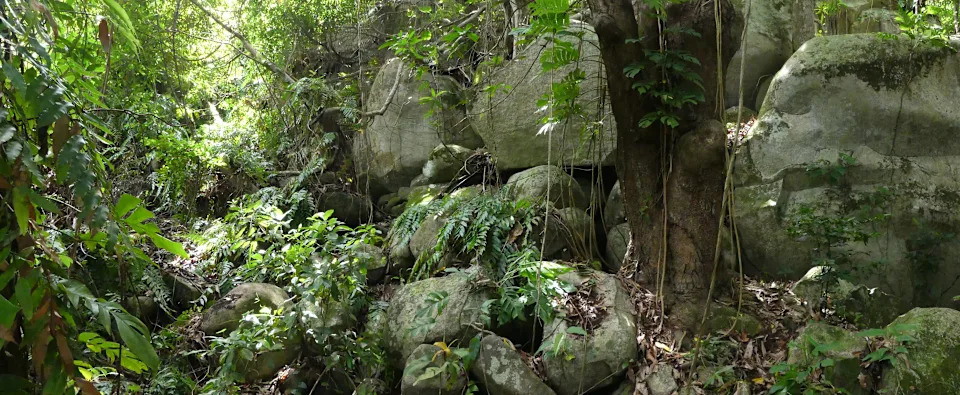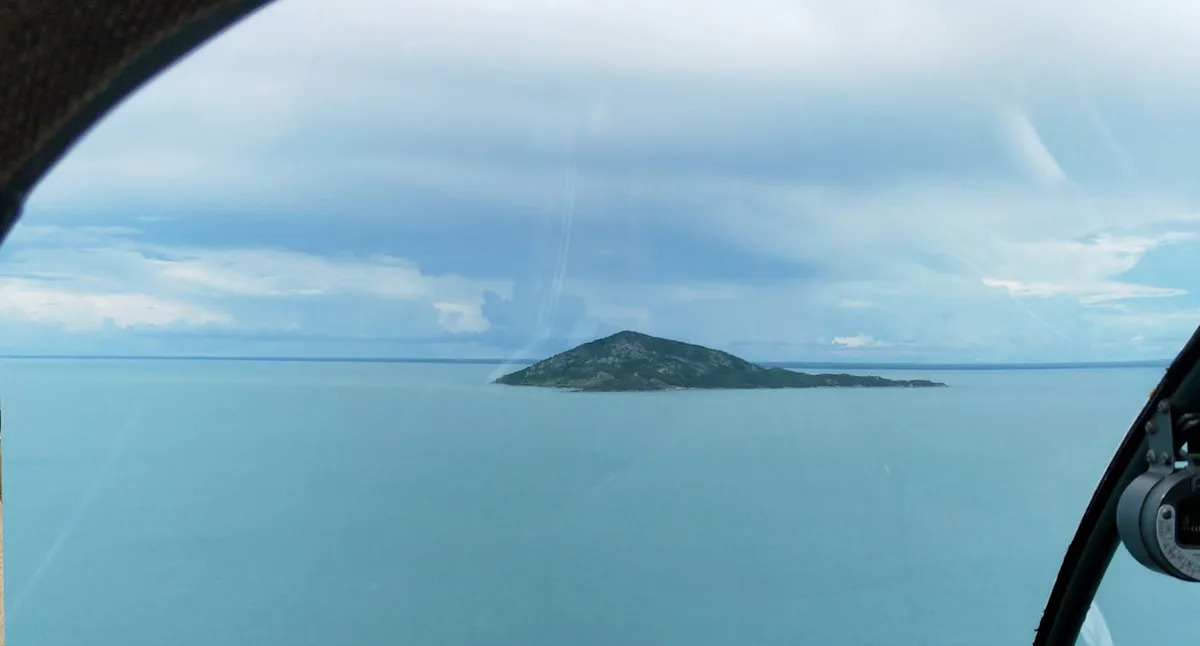On a remote island in Australia’s Torres Strait, three new species have been discovered that exist nowhere else in the world. From a helicopter, Dauan Island appears like a pyramid surrounded by ocean.
People have lived on this tropical paradise for thousands of years, but few outsiders visit due to its remote location between the tip of Cape York and New Guinea. Although it’s only three square kilometres, locals don’t generally venture up into the boulder fields, which cover half the island. And that’s where a team of researchers from James Cook University found two new types of frog and a gecko.
It’s rare to find one new vertebrate species in Australia, let alone three. Associate Professor Conrad Hoskin, who led the expedition, told Yahoo News the island’s flatter fringe had previously been explored, but it’s the boulder fields where the “really interesting” creatures usually hide.
His description of the landscape illustrates why people stay away.
“When you hit the boulder fields, you’re dealing with millions of rocks the size of cars, and bigger. To get any significant distance into that boulder field is tricky. You’re climbing mostly under and through rocks,” he said.
“It gets quite a lot of rain coming through, so it’s festooned with creepers and ferns. You’re sometimes standing on stuff, and you don’t know what’s below you. It’s probably the trickiest boulder field I’ve been in.”
Related: Rare Aussie creature not seen in 40 years rediscovered hiding under long grass

Climbing through the boulders is a challenge: Source: Conrad Hoskin
What are the names of the three new species?
The three animals have been named in the local language.
The Dauan Island gecko (Nactus simakal) was named after the mountain on the island where it was found, Simakal Pad, also known as Mount Cornwallis.
The small Koeypad Frog (Choerophyrne koeypad) was named after the word for rocky mountain.
The larger Gobakula Frog (Callulops gobakula) references the word for rocky place.
The Gobakula frog on Dauan Island. Source: Alexander Davies
What’s unique about the animals?
Fewer than 150 people live on Dauan Island, but some may have been aware of the three species in the periphery. The Koeypad frog has a distinctive call that sounds a little like someone tapping on metal, and the Gobakula Frog’s croak is similar to that of a green tree frog.
The two species are from a genus that was not previously known to occur in Australia. Rainforest has declined across the Torres Strait over thousands of years, resulting in the extinction of similar species elsewhere. But the boulder fields on Dauan Island have provided them with the cool, wet conditions they need to survive.
“Now they’re marooned on an island a long way from their relatives,” Hoskin said in reference to similar species in New Guinea.
The frogs are believed to be abundant, but the boulder field is roughly 1.5 square kilometres, and their available habitat is only around 1 square kilometre.
The gecko is closely related to a species found in Cape York, which is a generalist in terms of the habitats where it can survive. But the Dauan Island gecko is only found on the boulder fields, and has adapted over time to have long limbs and a banded camouflage pattern. It’s hoped there are more species in the boulders that are yet to be described.
Discovery highlights how ‘special’ remote island is
Councillor of Dauan Island, Torenzo Elisala, said finding these new species is important for science but also culture.
“The new discoveries highlight how special our island is,” he said.
“Our community has been tucked away in the Guda Maluilgal nation for millennia, sharing the spiritual connection from flora to fauna to that of our ancestors who lived on these lands before us. We are connected to the land, sea and air.”
Getting to Dauan Island is tricky. There’s no airstrip and reaching it by boat from Thursday Island can be a struggle when it’s windy.
But Elisala is hopeful the scientific discoveries will lead to renewed interest in the island, and create potential for more tourism.
The species were described in the journal Zootaxa in two papers here and here.
Love Australia’s weird and wonderful environment? 🐊🦘😳 Get our new newsletter showcasing the week’s best stories.


